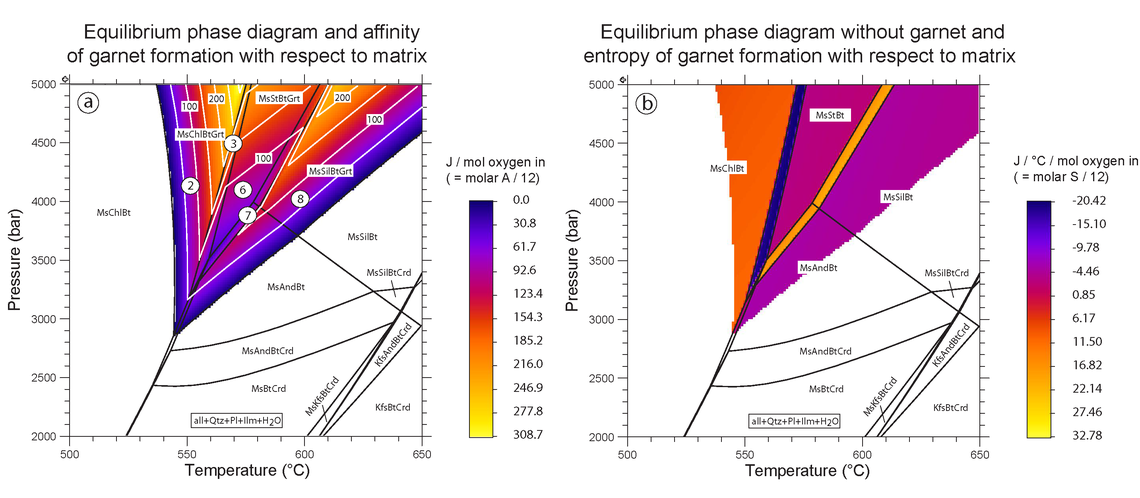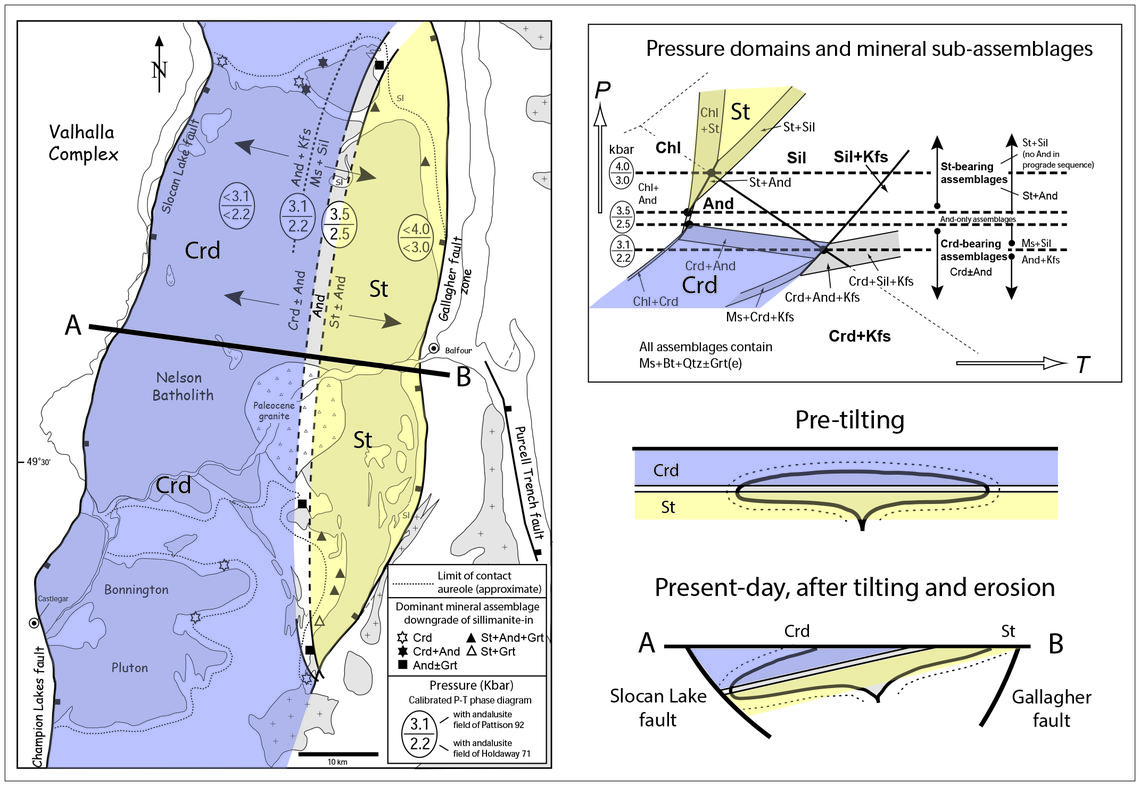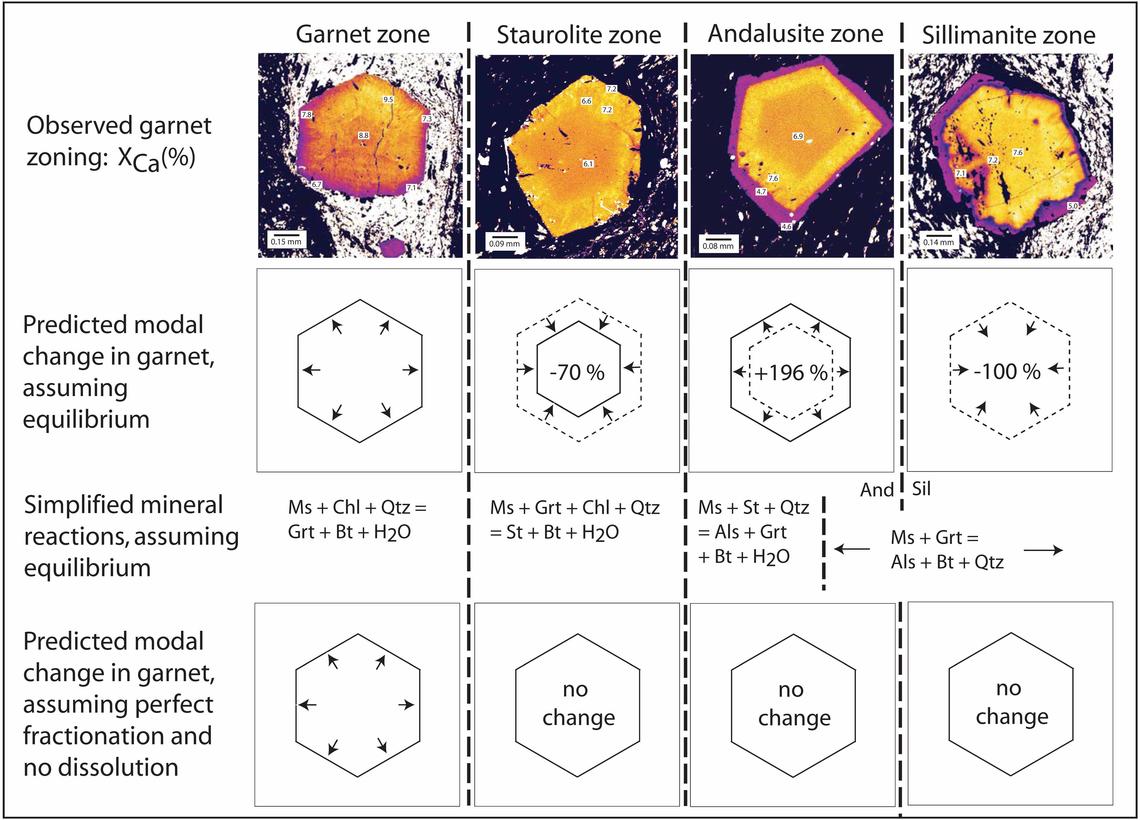Current Research Projects
Reaction overstepping in prograde metamorphism
I am interested in the extent to which metamorphic reactions may be overstepped due to kinetic inhibitions to reaction. Not much overstepping is needed before reactions other than the thermodynamically predicted ones become possible, which bears on how microtextures are used to infer P-T paths. A primary determinant of how much overstepping occurs is the rate at which reaction affinity (the macroscopic driving force for reaction) builds up when a reaction is overstepped: the greater the rate of build-up of A with overstep, the smaller the expected overstep. Colleagues Fred Gaidies (Carleton) and Christian de Capitani (Basel) and I have prepared reaction affinity 'maps' to try and address this question. An example is shown on the right.
Phase equilibria of metapelites
This career-long pursuit focuses on low pressure metapeltic phase equilibria, generally below the Al2SiO5 triple point, such as are developed in regions with lots of igneous intrusions. Where developed, these are sensitive indicators of relatively subtle pressure differences (sub-0.5 kbar resolution), as shown in the phase diagram on the right. This is useful in understanding intrusion emplacement depths and mechanisms, and, when tied to emplacement ages, provides P-T-time markers in orogenic belts. The map and cross-section on the right of the Nelson batholith and aureole shows how consistent variations in the distribution of these mineral assemblages around the aureole are related to differences in pressure of contact metamorphism. This in turn demonstrated that the batholith and aureole were tilted by about 10° to the west following emplacement, due to later tectonic activity as the Cordilleran orogen evolved.
Porphyroblast behaviour in prograde metamorphism
I am interested in the extent to which garnet, staurolite and other porphyroblasts participate as reactants in prograde metamorphic reactions, a question that bears on the interpretation of metamorphic reaction processes and on geothermobarometry. The two end members are perfect equilibrium behaviour, and perfect fractional behaviour. Comparison of these end members with the zoned garnets from the Nelson aureole suggests that reality lies in between (see diagram to right).
Other current projects:
Compilation of a database of natural mineral assemblages and mineral compositions in metapelites from prograde metamorphic sequences spanning low to high pressure. These data will be useful for testing new thermodynamic models.
Relationship between 1) metamorphic pressure inferred from phase diagrams and 2) depth at the time of metamorphism and - are our estimates of depth over-estimates?
Comparison between mineral assemblage development in rocks that were metamorphosed under significant and insignificant deviatoric stress - the role of deformation in the equilibrium and kinetics of metamorphic recrystallization
A mineral assemblage map of the classic Barrovian domain in central-eastern NE Scotland - relationship between mineral assemblages, isograds and bulk compositions
Several interesting petrology/tectonics projects being undertaken by my graduate students.

Left: Reaction affinity of garnet formation relative to garnet-free matrix. Right: Entropy change associated with (potential) garnet formation. (Pattison et al., 2011)

Post-emplacement tilting of the Nelson batholith and aureole, SE British Columbia (Pattison & Vogl, 2005)

Observed Ca zoning in garnet (Nelson aureole) compared to (1) predicted behaviour according to equilibrium and (2) predicted behaviour according to perfect garnet fractionation (Pattison & Tinkham, 2009)
